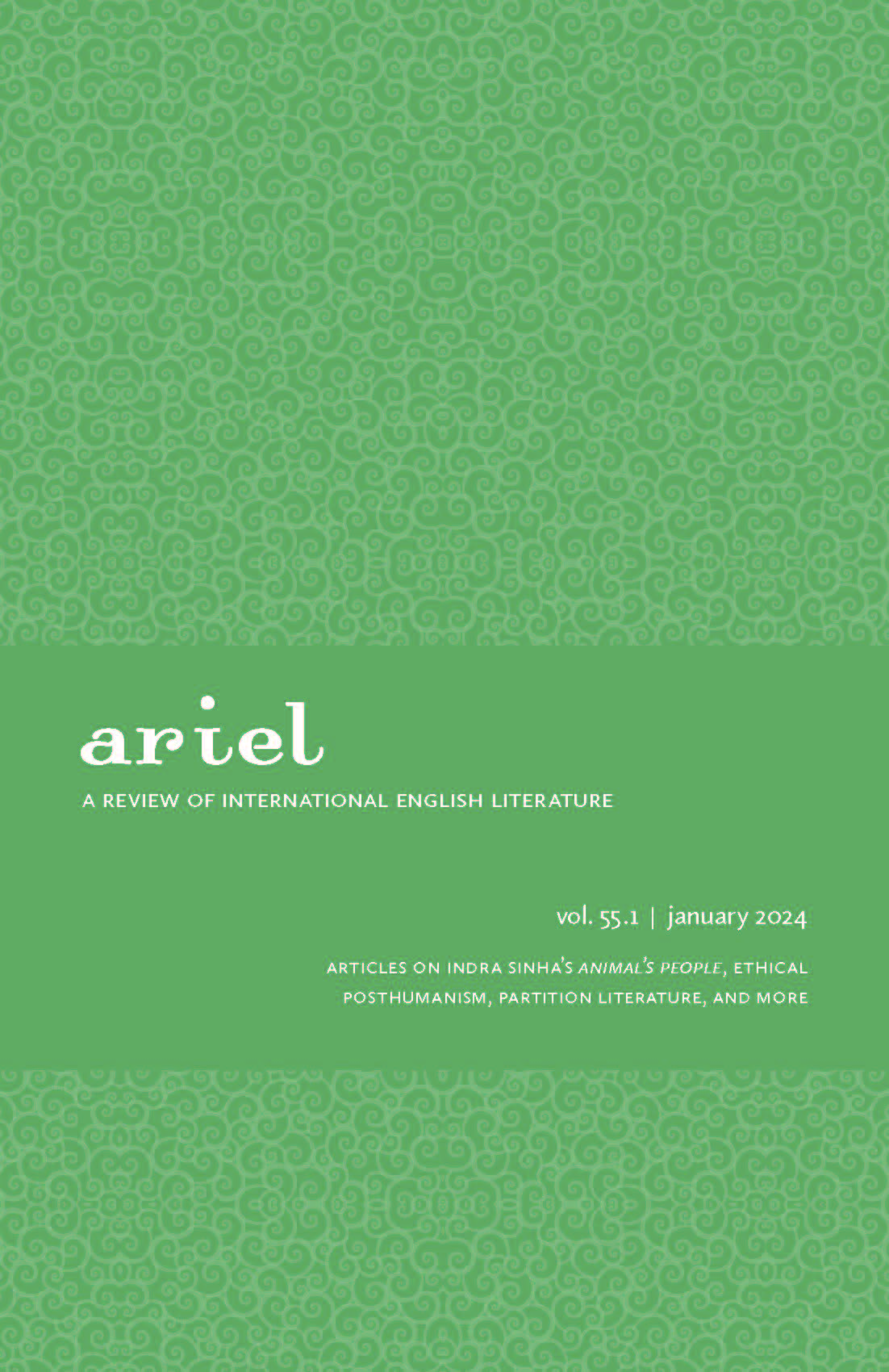Monster Ecologies: Material Eco-Rhapsody and the Bio-Gothic in Animal’s People
Keywords:
Bhopal, Gothic, embodiment, slow violence, environmental justiceAbstract
This article analyzes how Indra Sinha’s novel Animal’s People incorporates bio-gothic aesthetics to address the unprecedented ontological, perceptual, and political challenges presented by the Bhopal Chemical Disaster. Bio-gothic aesthetics refer to biological substrates in order to represent a “trans-corporeal” body (Alaimo), one enmeshed with a damaged environment, where disruptions to the ecosystem return to disturb the so-called normal behavior of the body. Sinha’s novel represents a tropic character from gothic fiction, the monster, to perform an embodied critique of neoliberal globalization. The bio-gothic monster portrays the body as a site of universal (but unequal) precarity and risk, a surface of intervention for disciplinary power, and a node in a multi-species network of irruptive, improvisational resistance. By analyzing moments of material ecorhapsody, in which drugs or other psycho-active chemicals enable Sinha’s narrator Animal to tap into an extrasensory beyond and channel a damaged-yet-resilient environment, I describe how the bio-gothic monster offers new ontological, phenomenological, and political formations capable of resisting neoliberal global amnesia. The bio-gothic monster serves as a site where the seemingly-immaterial flows of global capitalism become-enfleshed, and, therefore, as a key node around which new, feral assemblages can be formed in the pursuit of postcolonial environmental justice.


